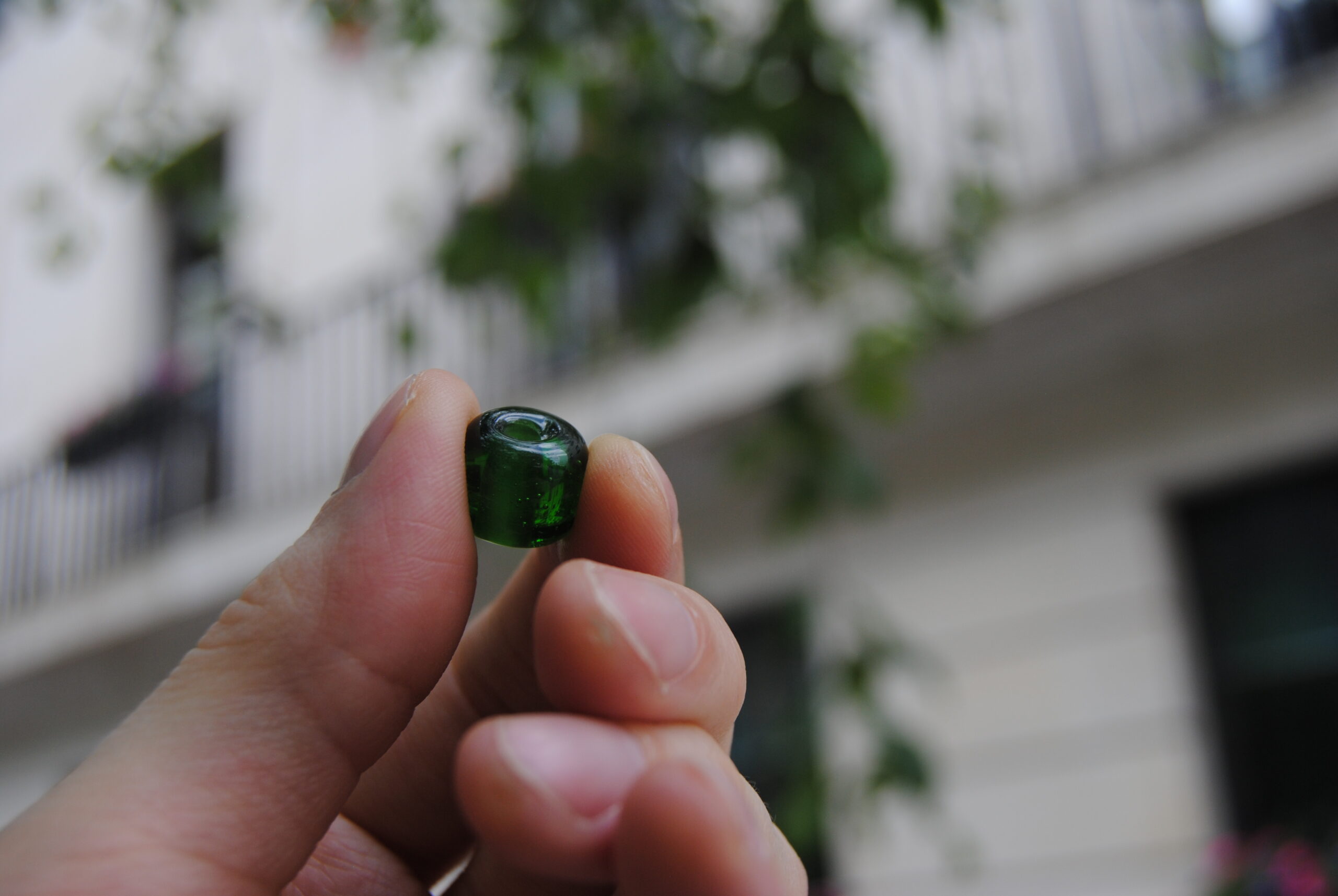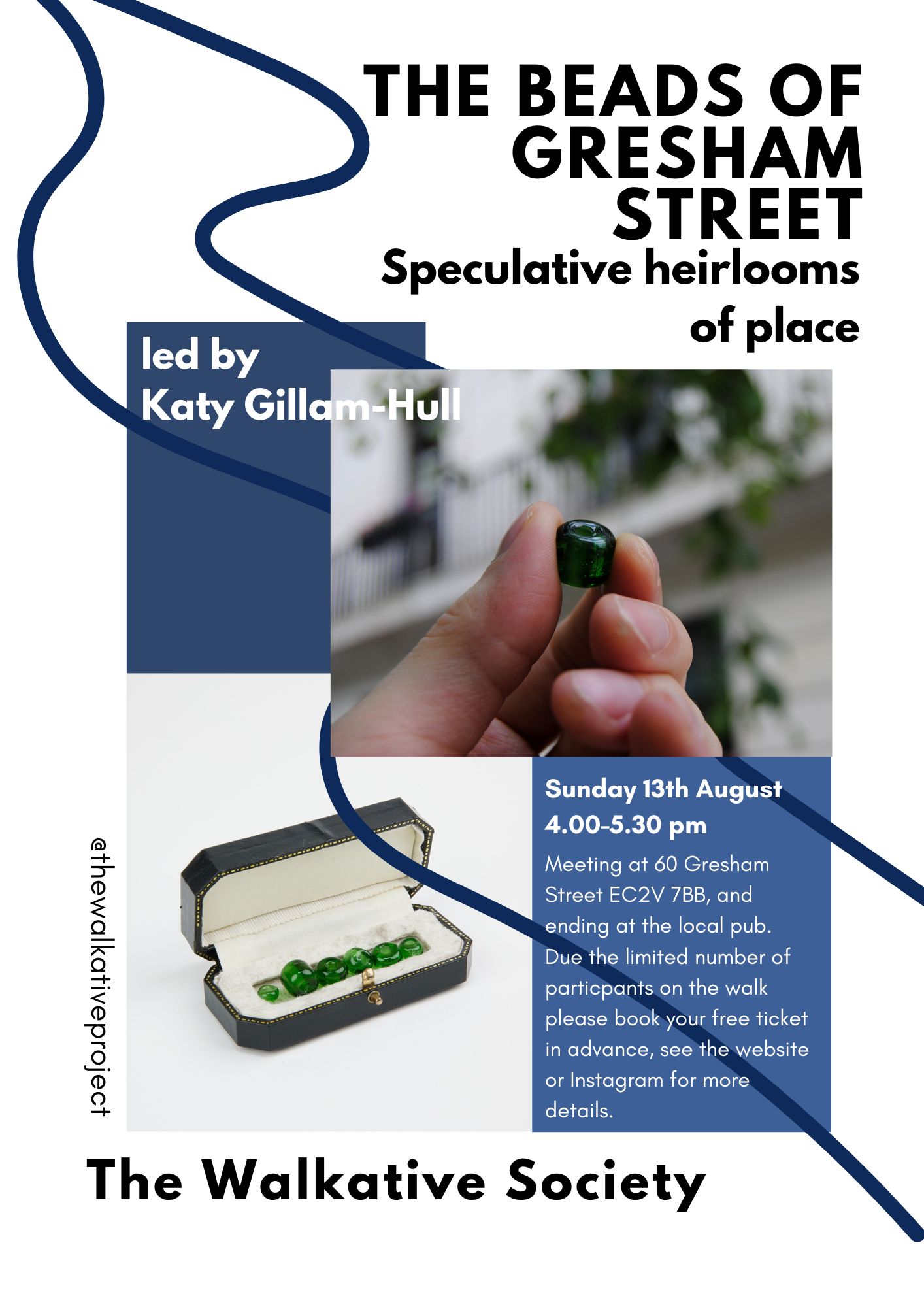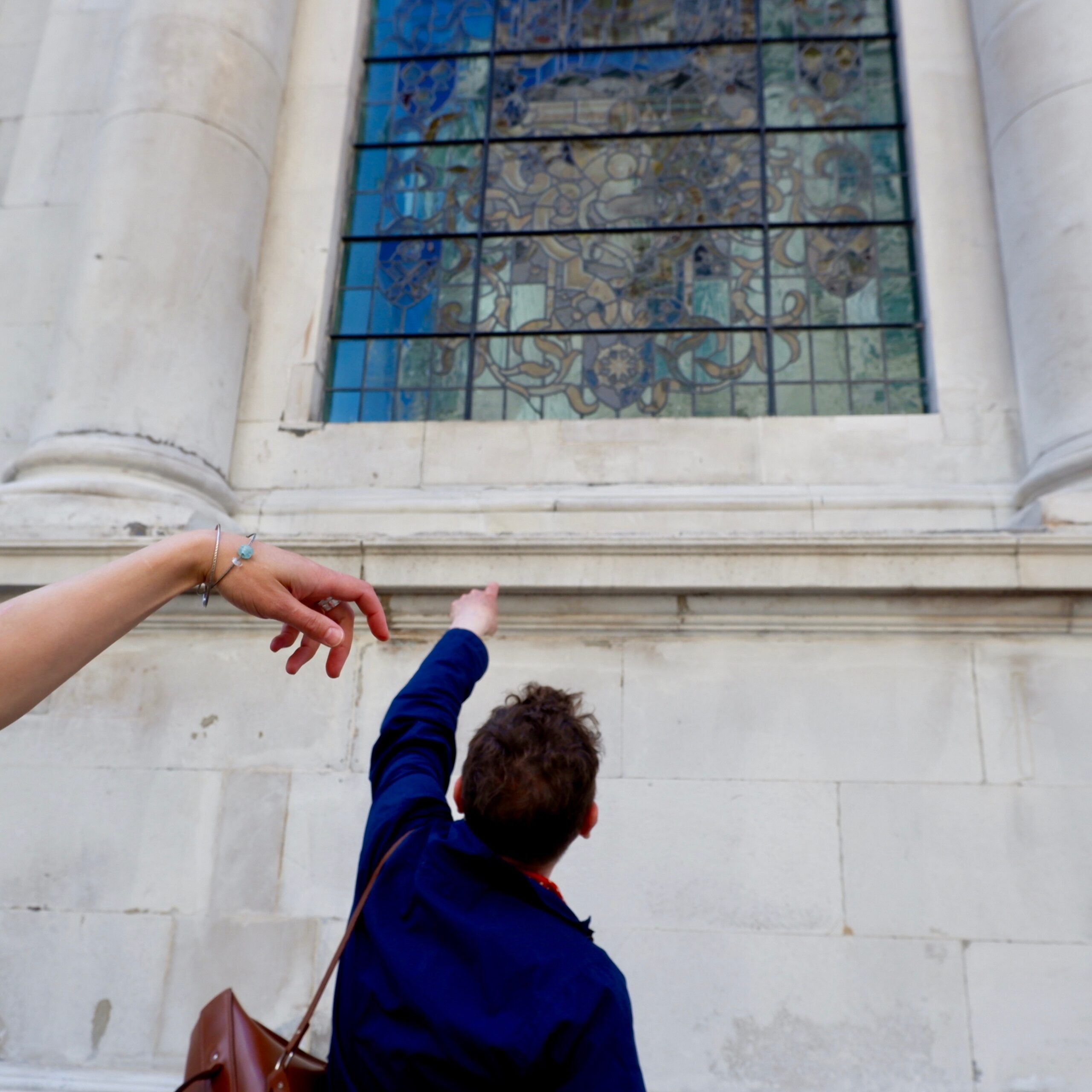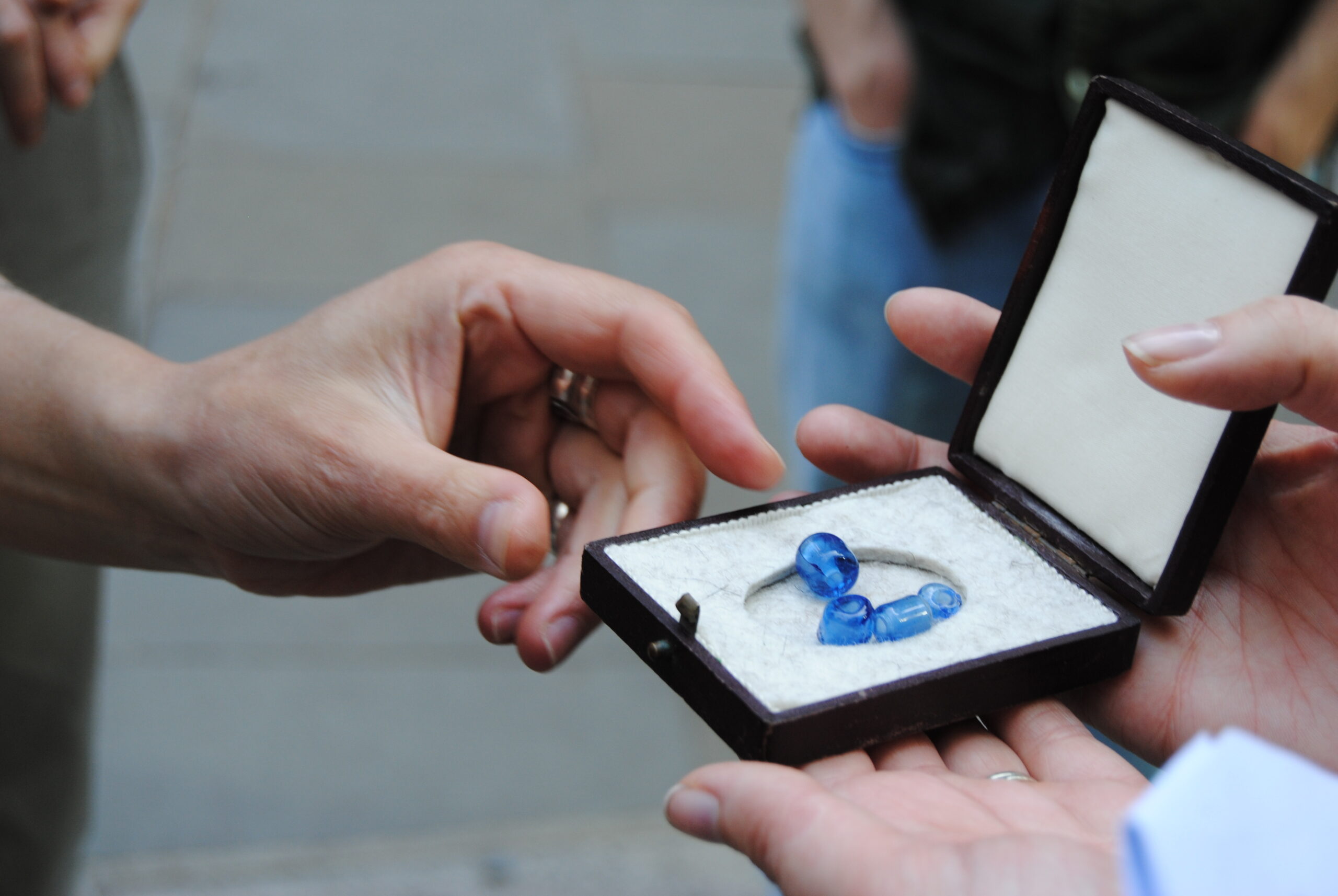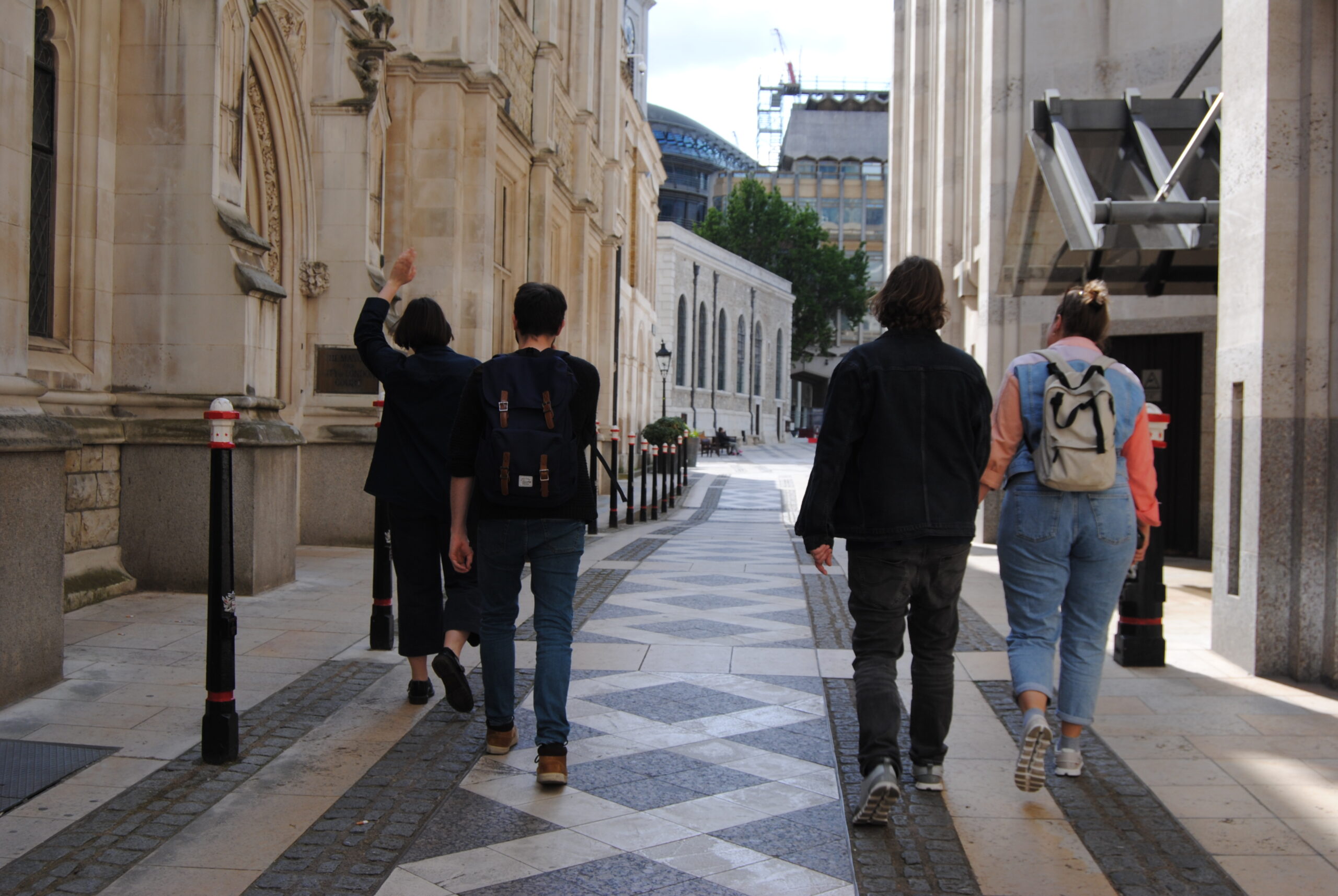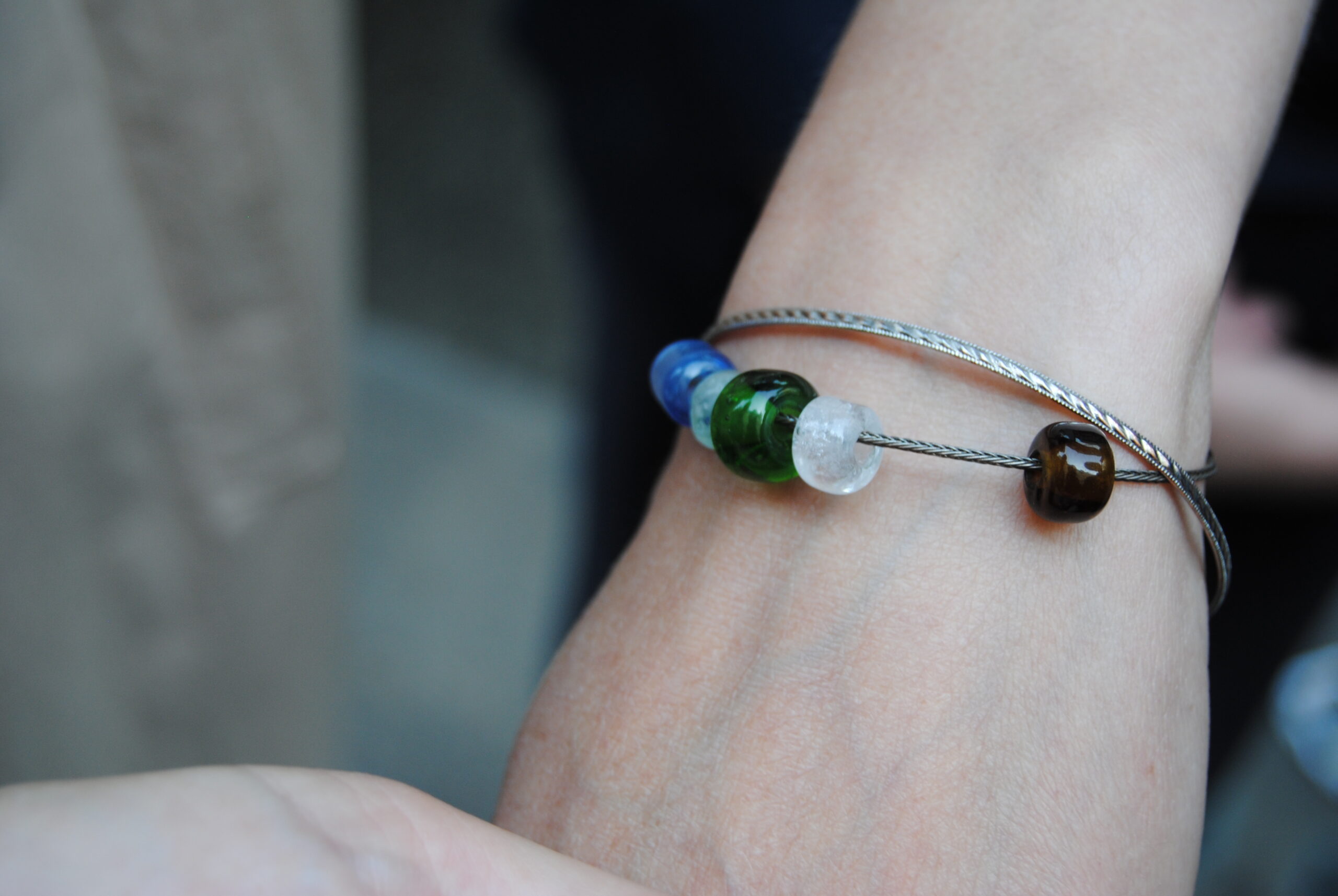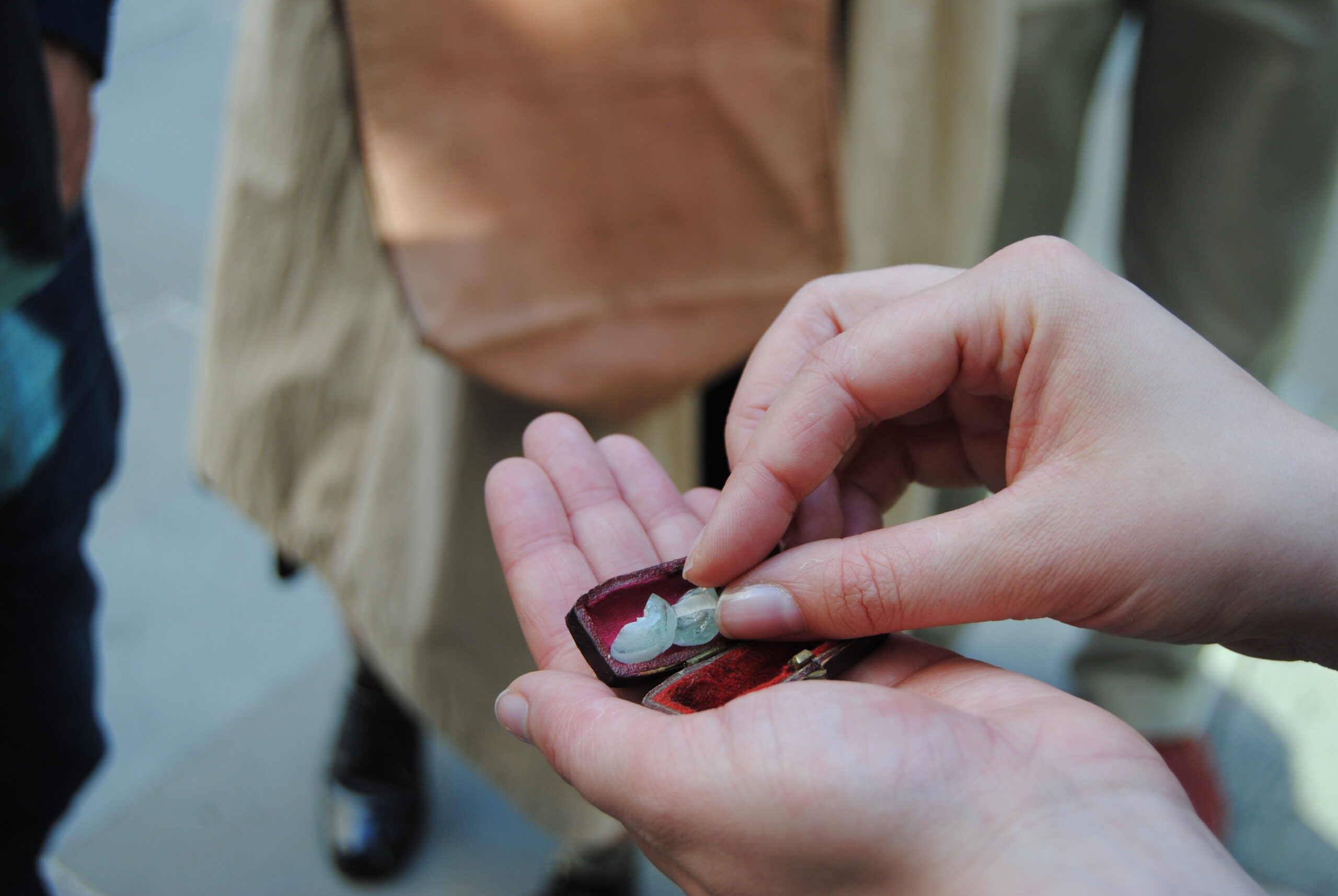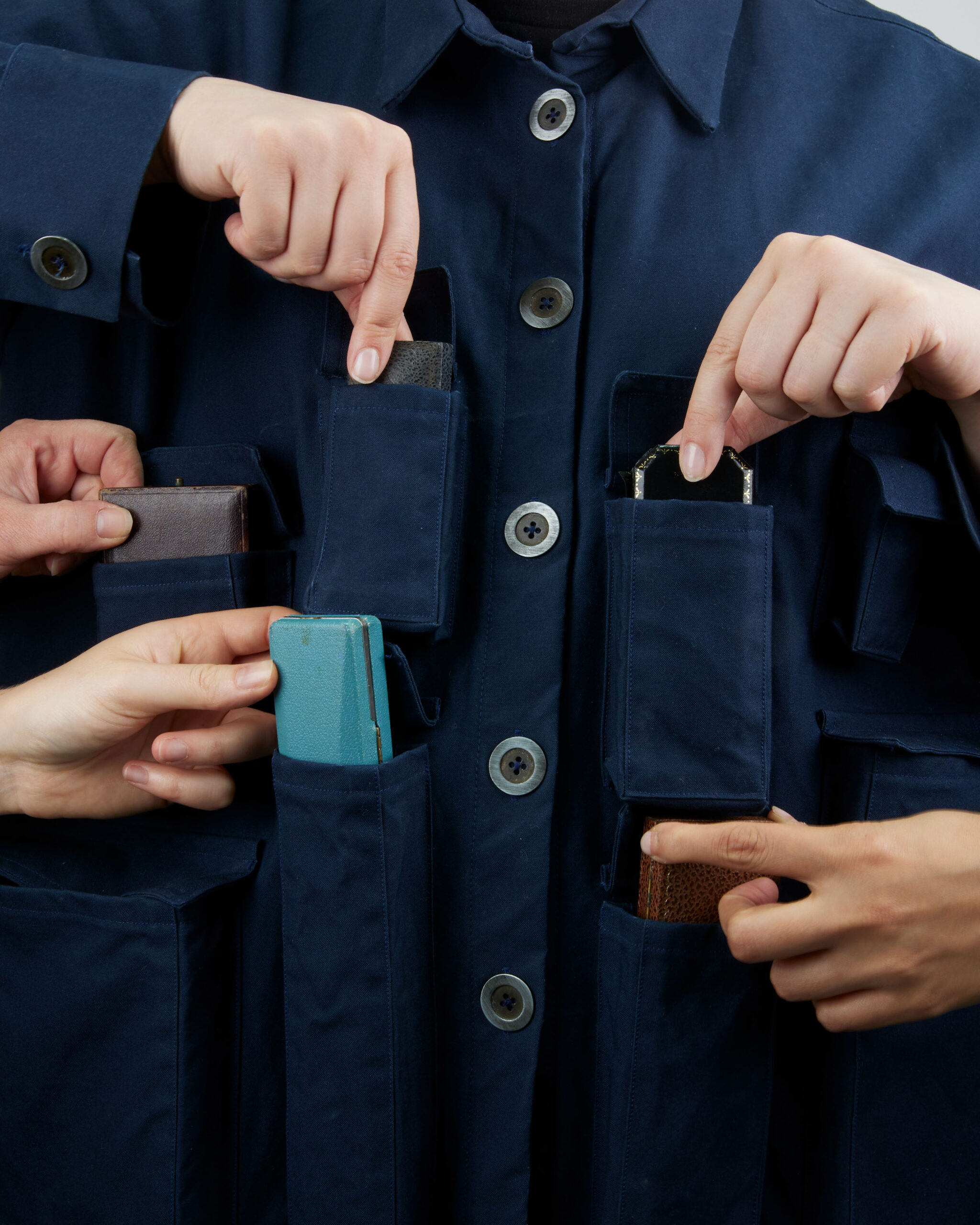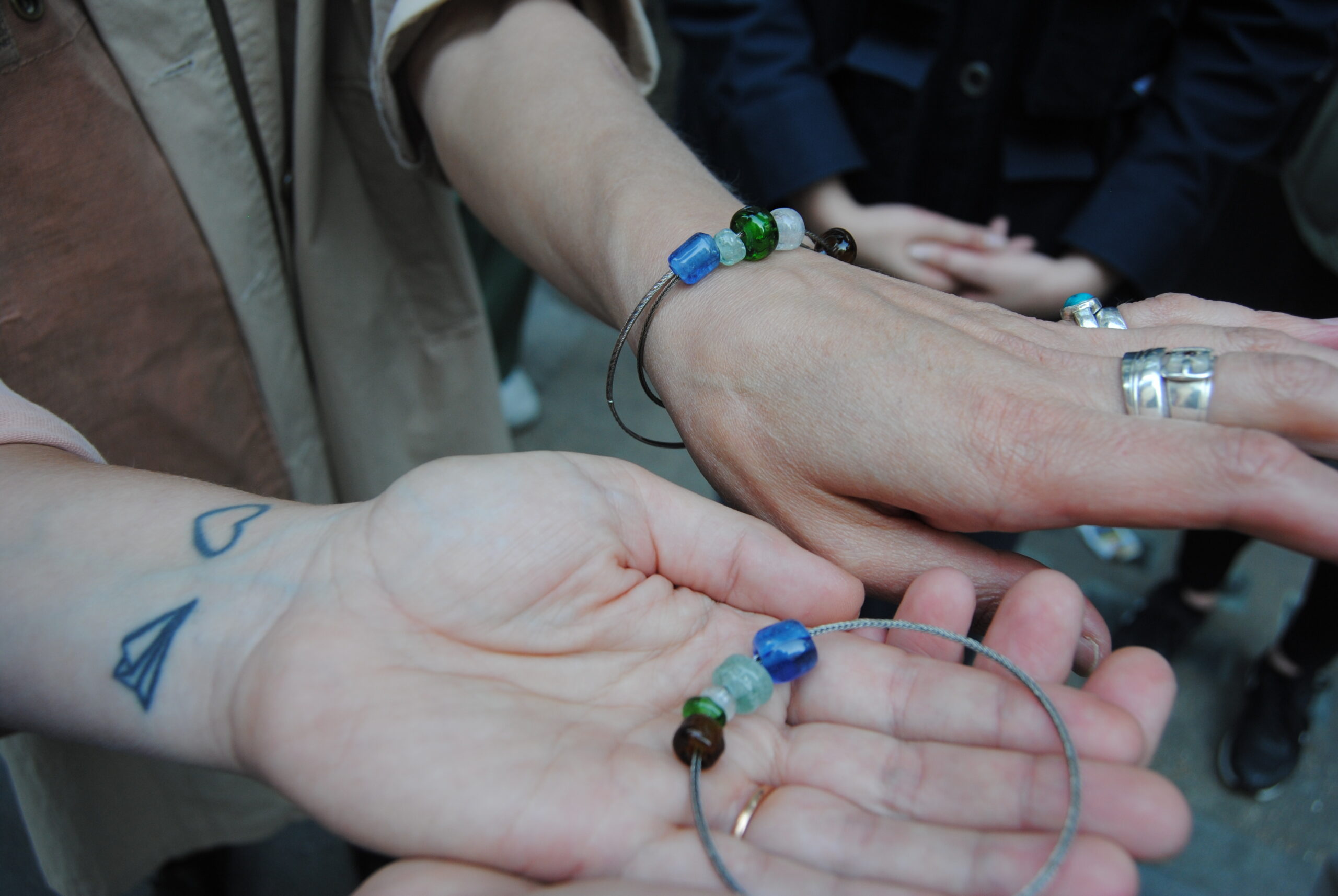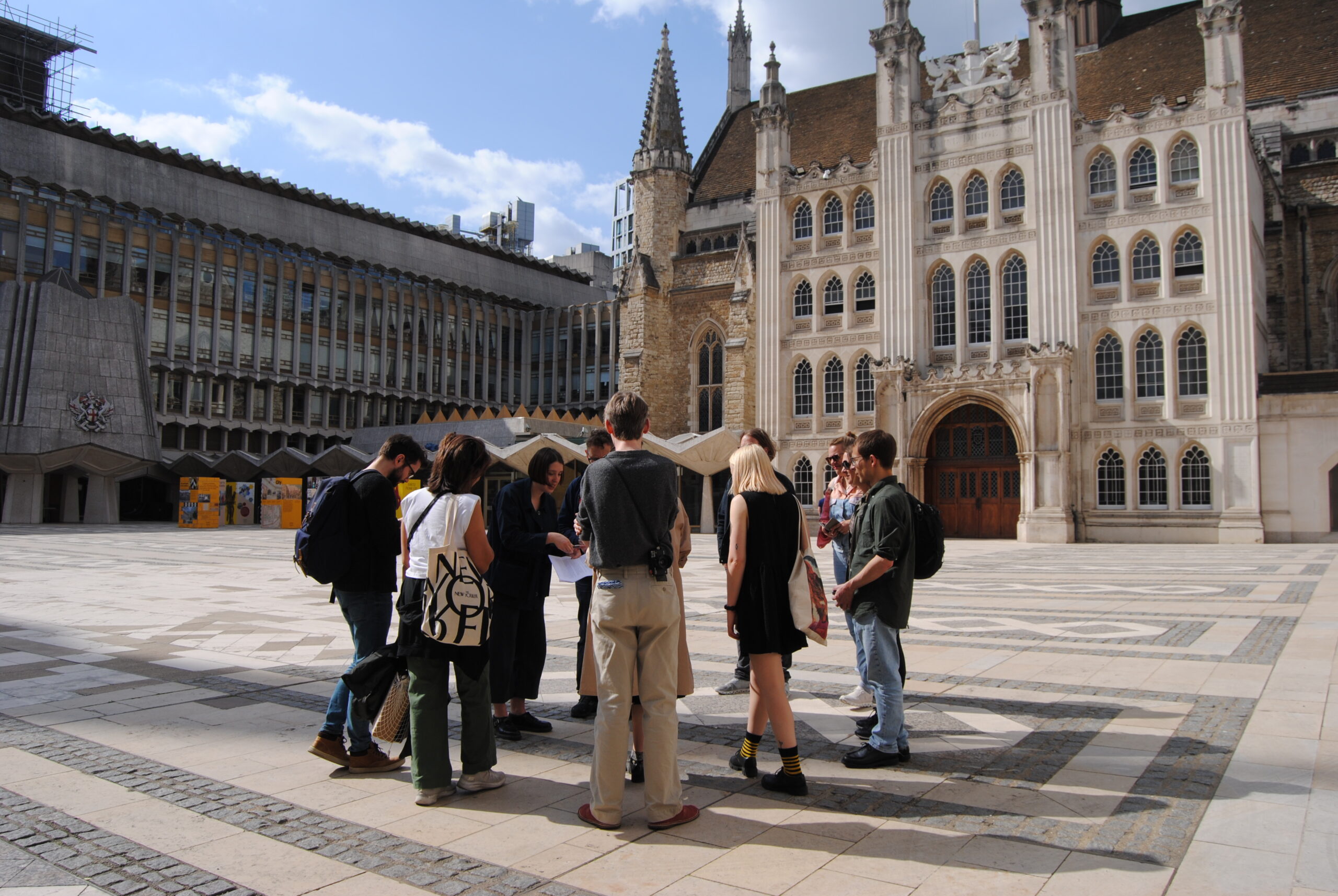The Beads of Gresham Street walk traces a street in the City of London where a Roman glass bead workshop was discovered. Using the archaeological finds as her inspiration crafts artist Katy Gillam-Hull immersed herself in the creation her own beads in this same style using found glass, letting the making of the new pieces guide her in her research and understanding of the space. Speculating as to what if beads kept occurring in this place throughout time, just as the waves sort pebbles into tidelines? What if time gathers and accumulates beads to this space? If so, what stories would they tell? The glass beads act as material tethers on the walk each bead sparking stories and reflections on the history of material, craftsmanship, and trade in the area. As the beads are revealed at each stop they are collaboratively compiled into a bracelet, each chapter shared becoming another marker on a silver cord of that is worn by each of the participants in turn. It is this tactile and delicate process of threading beads together, almost ritualistically passing each bracelet on to the next wearer and blend of material and place that creates a fascinating kind of encounter. This physical meeting with the temporality of the glass creates a sense of awe and connection through history, both rooted in the space through the embodiment of walking yet relocated from our surface assumptions and experience of place, a kind of material time travel.
This experience is supported by the craftsmanship of the objects engaged with on the walk, as collection of glass beads made from 5 different types of found glass, some mudlarked historic glass from the River Thames other found on the location of the street itself. These beads and the corresponding bracelet are stored and carried in a bespoke jacket with delightfully specific pockets made for vintage jewellery boxes containing the beads, a wearable cabinet of curiosities.
Focusing the walk around a material and letting it lead the way lends itself to a larger discussion of materiality itself and they ways we perceive and encounter it. The environmental element of this is particularly reflected in the use of waste glass that is melted down to make the beads, a wilful re-imagining of material on the part of the artist.
“As we return this glass to the pub where I fished it from the recycling bin I question what it is when I re-use this glass,
To take an object and see a material?
Is it recycling? An innovative and contemporary process, a greenwashing marketing ploy, a green bin for your bottles which once dropped in cease to exist for you and are no longer your concern.
A self taught object impermanence of waste,
A willful forgetting of trash and ignoring the perseverance of material, making recycling seem exciting and radical,
When in fact material is always being re-formed and re-worked,
Churches being re-built over and over themselves, and even relocated across the world and built again,
Stones and ruins persevere as new foundations for future buildings,
To speak of this as recycling is a far too narrow a view of materials that have been smashed up and re-worked in place since 200AD
No, Let us instead see it as a re-imagining,
a re-visiting,
a meeting with material,
a way to notice this continuing perseverance,
an encounter of time through touch,
melting down, re-working, manipulating it not as an obliteration of what it was but adding another line to the story another bead to the string.
The material being passed on to another form, a kind of heirloom.”
Credits
Hosted by: Walkative Project


